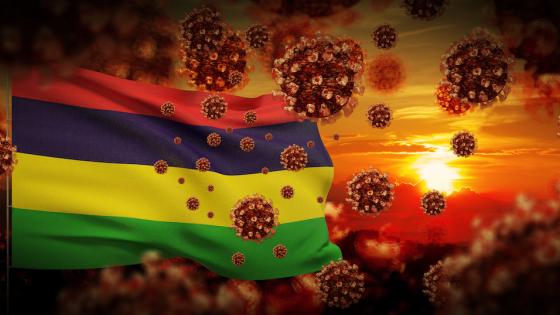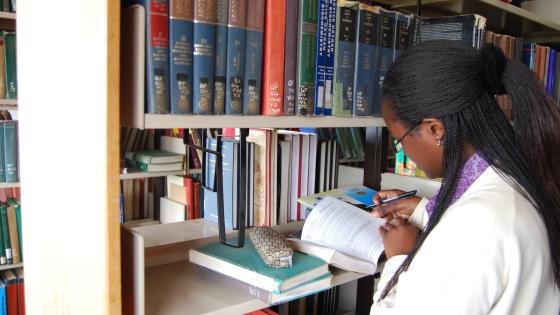The COVID-19 pandemic is affecting the world in different ways and governments across the globe are responding in various ways. The immediate effects of any such pandemic include the significantly large number of deaths, impoverishment of the population, and the worsening of the economy. The IMF, for example, projects that this could lead to the worst worldwide recession since the 1929 Great Depression (Georgieva 2020).
Countries varied in their degree of preparedness to face COVID-19 and, as a result, their responses to deal with it are wide ranging. At one end of the spectrum, we have those who preferred early lockdown; while at the other end, we have those who adopted lax confinement rules. The Republic of Mauritius has been assigned the highest score on the Stringency Index by researchers from Oxford, who are tracking the interventions of different governments (Hale et al. 2020). Here, we study the Mauritian response to COVID-19.
Mauritius
The Republic of Mauritius, located off the southeast coast of Africa, is a democracy with roughly 1.3 million inhabitants on its three main islands: Mauritius, Rodrigues, and Agalega. It is the 10th most densely populated country in the world. Around one million tourists visit Mauritius annually to enjoy the beautiful beaches, blue lagoon, and local hospitality.
The Noble Prize Laureate Joseph E. Stiglitz stated that the accomplishments of Mauritius are admirable and many nations should learn from them (Stiglitz 2011). Healthcare in state-owned institutions like hospitals and healthcare centres is free. Mauritius has at least three beds per 1,000 inhabitants and this contrasts with 1.2 beds in Sub-Saharan Africa. The latest data show that Mauritius allocated 9.3% of its GDP to social protection measures.
Timeline before cases detected in Mauritius
Chinese authorities started containment measures on 1 January 2020 and blocked all public transportation links between Wuhan and the rest of the world on 23 January. Meanwhile, cases were identified in Thailand (13 January), Japan (16 January), South Korea (20 January), and Singapore and Vietnam (both 23 January).
On 22 January, the Government of Mauritius started screening people on arrival at its airport, introducing fever measurements and separation of at-risk passengers on 29 January. By that time, Australia, Cambodia, Canada, Finland, France, Germany, Italy, Iran, Malaysia, Nepal, Sri Lanka, the United Arab Emirates, and the US had already detected their first cases. From 28 February – although there were no cases detected locally – Mauritian authorities quarantined visitors from countries with a high number of cases.
The next few weeks saw a persistent media campaign to raise awareness on how to prevent transmission of the disease, inadvertently leading to panic-buying in supermarkets – a worldwide trend. The authorities even banned the 12 March Independence Day celebrations in schools.
The Prime Minister addressed the nation regularly and was the one to announce the first case in Mauritius live on national television. He set up a communications cell in his office. Key stakeholders, including ministers and high officials from the ministries of health and of commerce and the police, held daily press conferences to provide COVID-19 statistics as well as to inform the population about the measures being taken. The Ministry of Information and Communication Technology has developed a mobile app called ‘beSafeMoris’, which gives official up-to-date information and useful tips, and can be downloaded and used free of charge.
Post-infection measures
The first three cases of COVID-19 in Mauritius were detected on 18 March 2020, all individuals with travel history abroad. The detection of four further cases the next day prompted the government to implement its first series of stringent measures, closing down schools and allowing only essential services (shops, banks, supermarkets, pharmacies, hospitals, police, and private clinics) to operate. The borders were closed to international arrivals, except for repatriation flights for nationals who were stranded abroad. There remained a limited public-transport service and private vehicles were subject to police checks on all major routes. Only people with a work access permit signed by the authorities were allowed to circulate; otherwise, people were subject to fines or, more often, advised to return home.
The next stage of escalation came on 24 March, when the number of detected infections had climbed to forty-two and people were still overcrowding supermarkets. A total ‘sanitary curfew’ was instituted. Supermarkets, bakeries, and shops were no longer allowed to operate, with immediate effect.
The number of cases kept climbing steadily, reaching 128 on 30 March. Health services prioritised contact tracing to identify people to test – that is, people who had been in physical contact with infected and identified patients – while anybody who had been quarantined and showed symptoms suggestive of COVID-19 infection was also tested. Fever clinics were instituted at public hospitals to separate potentially infected and symptomatic patients from other patients.
The curfew terms were extended to 15 April, while rules about supermarkets were relaxed with very strict control implemented from 2 April. Figures 1 and 2 show the state of COVID-19 infections in Mauritius at the time of writing this column. Figure 1 shows that the number of infected cases has varied widely since the first two cases. The peaks often occurred when a number of persons from the same family or group or vicinity were found to be positive.
Figure 1 Disease progression in Mauritius: Rate of infection and cumulative deaths recorded
The fast decision to impose the sanitary curfew early has helped reduce the number of new infections. As a result, the number of deaths due to COVID-19 has also been kept under control, allowing healthcare services to provide the best care possible.
Figure 2 shows the confirmed cases and those who subsequently recovered. According to daily official government data as of 29 April, the total number of positive cases registered in Mauritius was 332, there were no new cases on that day, 306 patients had been treated successfully, and only 29 passengers were in quarantine. None of the active cases needed ventilator support.
Figure 2 Disease progression in Mauritius: Cumulative recorded cases and subsequent recoveries
All healthcare professionals who had cared for COVID-19 patients were also quarantined in facilities such as hotels and youth centres. The total number of tests carried out by 29 April stood at 15,893.
Beating the projections
Forecasting the progression of the disease is difficult simply because COVID-19 symptoms range from the mildest to the most severe. Cases of the latter tend to be identified and captured in official data. However, the authorities’ initial policy to focus on confirmed positive cases and conduct contact tracing meant that there was no asymptomatic testing for the general public in the early phases. Thus, there were undiagnosed and undetected individuals who might have been infecting others.
In contrast, South Korea, another country lauded for its management of the pandemic, avoided a full lockdown and organised mass testing, including in novel ‘drive-through’ testing stations. They even used a mobile application for alerting people that they were within 100 metres of a confirmed case.
The Center for Disease Dynamics, Economics and Policy modelled forecasts for the African region and surmised that a ‘hard lockdown’ would result in a 44% reduction in transmission rate (R0) during the lockdown (Frost et al. 2020). Using an Insight Maker agent-based systems dynamics model (Fortmann-Roe 2014) to match existing data as closely as we could, we calculated an 80% reduction in R0 and a regression with an R2 value of 0.98. (An exact match would be R2 value of 1.)
Figure 3 Actual disease progression vs regression curve from our model
As strategies of detection change and treatment options become more established, a prolonged deconfinement might be sensible from a public-health perspective. This has to be balanced with the economic costs of the ideal length of partial deconfinement (i.e. physical distancing only). The eventuality of a vaccine being available before the country reaches this peak of cases is a non-negligible factor. Proactively mass-screening the population to detect infectious individuals – effectively reducing the transmission rate – could partially mitigate the impact of the pandemic.
Economic impact
The global economic costs of the COVID-19 pandemic will be massive. In Africa, the pandemic is gaining momentum and the continent is bracing itself for an unprecedented health and economic crisis. The loss in GDP during a 30-day period will be 0.85, assuming the uniform trend set by IMF (2020). The Government of Mauritius promptly committed around 12 billion rupees ($300 million) to support its businesses and workers, but it is unlikely to suffice, as the effect of COVID-19 is likely to be felt well into 2021.
The World Bank (2020) has a slightly less pessimistic projection than the IMF: it estimates that in Sub-Saharan Africa’s first recession in 25 years, the region’s pace of economic growth may drop from 2.4% in 2019 to between -2.1% and -5.1% in 2020. This is likely to result in a shortfall in the balance of payments of more than $100 billion, which will affect its citizens’ quality of life – especially as Africa’s major trade partners like China, India, and the UK are grappling with both supply and demand shocks.
For Mauritius, its ban on international travel makes its situation worse. Countries like Mauritius that rely on foreign-exchange earnings from tourism to purchase food, medicines, and other basic necessities are likely to find themselves in very difficult positions.
Citizens’ opinions
The Mauritian citizens are generally happy that their government is providing the necessary care. Online classes for primary schools as well as those broadcast on national television are highly appreciated. The government’s daily press releases and intensive awareness campaign play a key role in comforting the people.
However, the citizens are upset with the premature shop closures. They opine that the supermarkets, shops, bakeries, and vegetable markets should only have been closed for a maximum of two days, giving the owners time to paint marks on the floor to enforce physical distancing in queues. This would have avoided the stress caused by the long closure of the shops.
Conclusion
The Mauritian government’s early decision to administer sanitary curfew is commendable. Its initiatives to alleviate the stress on its citizens – such as providing continuous teaching and learning via the Internet and television and regulating the prices of masks, gloves, and sanitisers – were welcomed by the population. With its drastic reduction in the number of new infections, the case of Mauritius shows that a well-implemented and early ‘hard lockdown’ can be effective in managing the spread of COVID-19.
References
Georgieva, K (2020), “Confronting the crisis: Priorities for the global economy”, IMF speech, 9 April.
Hale, T, N Angrist, B Kira, A Petherick, T Philips and S Webster (2020), “Variation in government responses to COVID-19”, BSG Working Paper Series, BSG-WP-2020/032.
Fortmann-Roe, S (2014), “Insight Maker: A general purpose tool for web-based modelling and simulation”, Simulation Modelling Practice and Theory 47: 28–45.
International Monetary Fund (2020), “World economic outlook (April 2020)”, IMF Data Mapper.
Stiglitz, J E (2011), “The Mauritius miracle”, Project Syndicate, 7 May.
Frost, I, G Osena, J Craig, S Hauck, E Kalanxhi, O Gatalo, Y Yang, K Tseng, E Schueller, E Klein and G Lin (2020), “COVID-19 in East Africa: National projections of exposed, contagious, symptomatic and severe cases”, The Center for Disease Dynamics, Economics and Policy.
World Bank (2020), “COVID-19 (coronavirus) drives Sub-Saharan Africa toward first recession in 25 years”, press release, 9 April.



